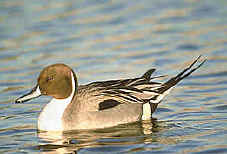



This game park neither boast of tigers
nor vultures on treetops. It doesn’t
even have the fairy-tale appearance of a
jungle. In fact, it’s beauty lies in its
less-than-a-jungle-like appearance. We
are talking of the Keoladeo National
Park. I visited the park more by coincidence. We had lost our way.
Early next morning, we were ready to date the birds at 5:30. That’s when bird
watching is at its best. Keoladeo National Park, in Rajasthan’s Bharatpur
district. It was originally the private hunting ground of the maharajas of
Bharatpur and converted into a bird sanctuary in 1956. It attained the
“national park” status in 1981.
Keoladeo’s major attraction are the charismatic and alluring Siberian cranes. Studies prove that they arrive at the park after travelling 6, 400 km from their Siberian home. It’s the only regular wintering area in India for these cranes, among the world’s most endangered species. Bharatpur is a green town. You notice the difference when you drive from Ranthambore. It is visibly much greener and the trees look healthier than Ranthambore’s
|
|
anorexic
trees. Motorised vehicles are not allowed inside. You can only enter the park on
rickshaws, bicycles or on foot. Which means that there are no blaring horns or
dirty diesel fumes from overworked fuel tanks of jeeps. We were a sporty lot, so
we all hired cycles to allow us to spot the birds at our convenience. And
we yelled out at our first sighting: “It is an eagle...no its is a dusky owl.
It’s koel...no it is a parrot.” It turned out to be a crow. That’s when we
settled for Kumarji to guide us through the sanctuary.
There’s
hardly much on view as you enter the park, except for monkeys, more monkeys and
still more monkeys. You have to get closer to the wetlands to make the first of
your spottings. Wetlands comprise over one-third of Keoladeo. You come across a
lot of parrots, and the occasional bulbul. Trees like ber, khajur, babul and
peepeul cover the park, providing ample shade to the surroundings.
We parked our bikes and made ourselves comfortable around a marshy area, with
plenty of bird life. We heard a loud chirping and asked Kumarji what bird it
was. He said that they were squirrels whose whistles we mistook for birds. Soon
we heard the cacophony of painted storks, open bills, spoon bills. It suddenly
sounded as though these birds were having a heated discussion and no bird was
ready to negotiate. A family of Jacanas with their gleaming colours and elegant
tail feathers were tending to their young ones.
|
|
The park supports 43 species of fish and in a good rainy season, it receives
more than 65 million fishes. It has an average of seven species of turtles and
five species of lizards. The forest harbors a number of animals. Sambar,
chital, nilgai, jackal, hyena, fox, mongoose and porcupine. Occasionally, a
fishing cat can be seen scooping its prey from waters edge.
I decided it was time to explore the park. I went further and came across a lot
of bird life. Egrets, cormorants and white ibis. I was able to identify them
thanks to my being a member of the Delhi Bird Club. I was joined by my group and
we left for another marshy area and parked ourselves under babul and ber trees.
The vegetation of the marshes is rich and provides a food source for waterfowl.
Plant species include water lilies, the true lotus, duckweed, water fern, sedges
and lesser reed mace. Wild rice grows in parts and is good source of food for
the birds.
(contributed by Amrita Talwar)
The best time to visit Bharatpur is Nov to February.
You can plan your visit to Bharatpur with us and stay at Resorts at Bharatpur near the park.

